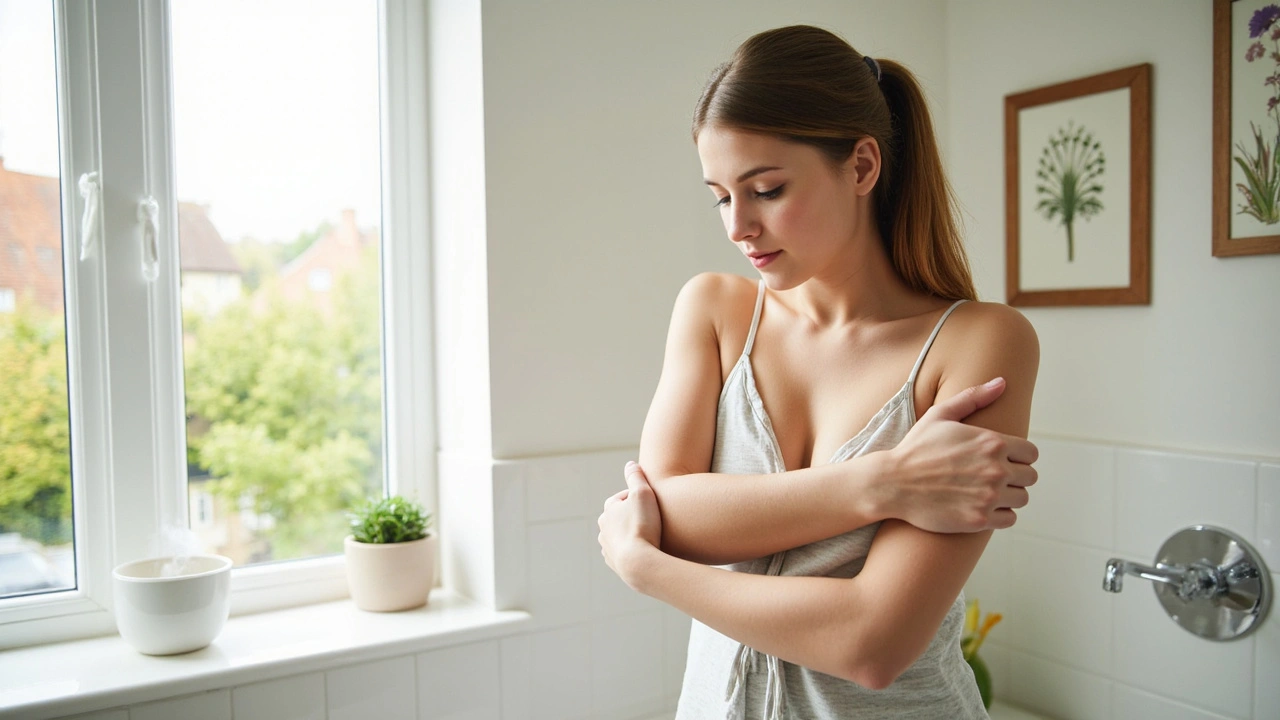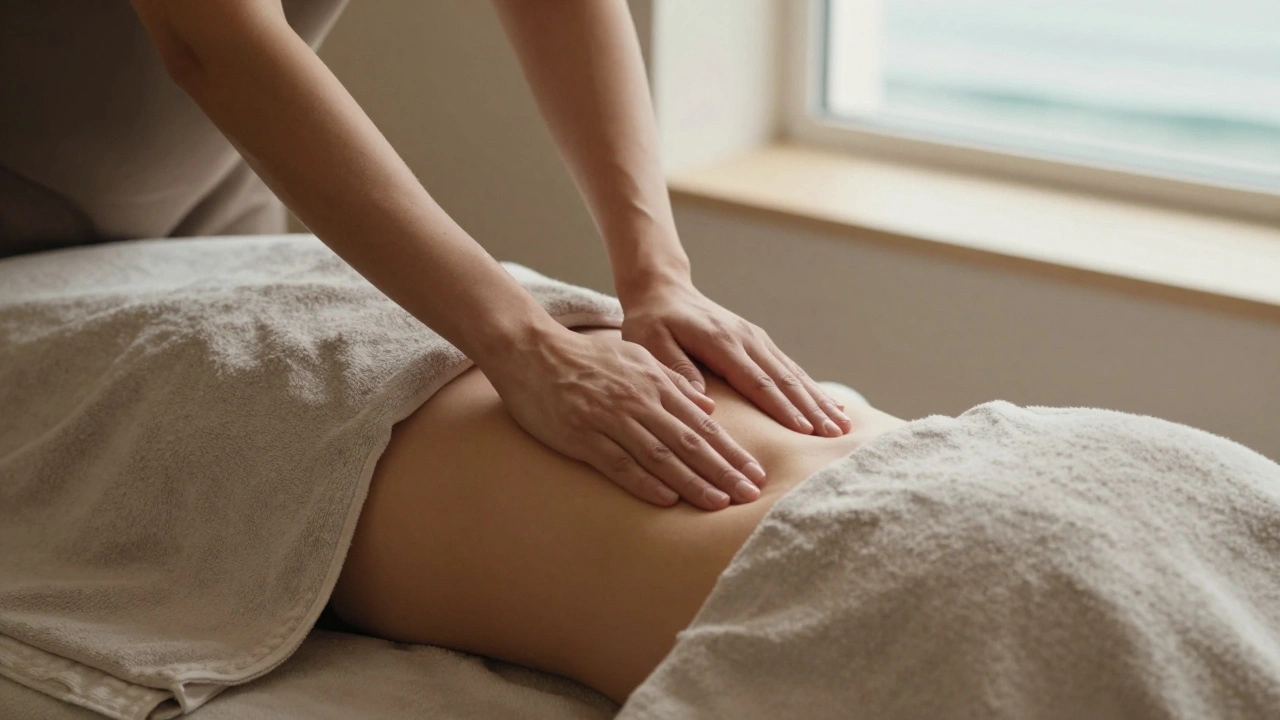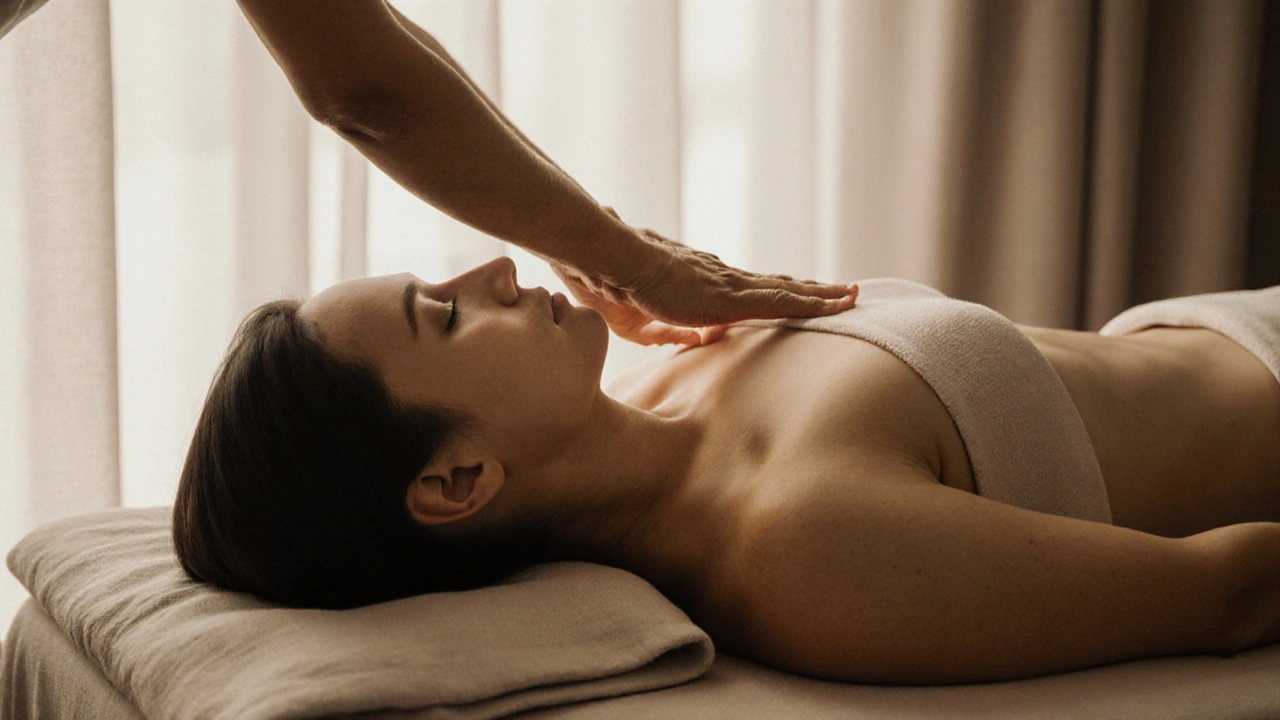Ever had days when you felt puffy, slow, or just plain tired for no good reason? Lymphatic drainage massage could be exactly what you’re missing. It's a gentle technique aimed at helping your body clear out extra fluid and waste, leaving you feeling lighter and sometimes even boosting your energy levels.
This isn’t your typical deep-tissue rubdown. The moves are soft, slow, and focused on getting your lymph system - your body’s hidden clean-up crew - working smoothly. If you sometimes catch yourself wondering where all that water weight comes from or why your legs feel heavy after a long day, you're not alone. More and more people are turning to lymphatic massage to fight that bogged-down feeling.
The best part? You don’t need any fancy equipment to try some of these techniques at home. But knowing what’s safe (and when to see a professional) makes all the difference. I’ll walk you through the basics, help you spot the real perks, and give you simple tips to make your first session, whether alone or with a therapist, stress-free.
- Direct Answer & Key Points
- What Is Lymphatic Drainage Massage?
- How It Works & Who Can Benefit
- Types of Techniques & Where to Try
- Tips for Safe and Effective Sessions
Direct Answer & Key Points
If you’re new to the idea of lymphatic drainage massage, here’s what you need to know: it’s a hands-on method that uses gentle, rhythmic movements to help flush extra fluid and waste out of your lymph system. It’s most popular for reducing swelling, helping with post-surgery recovery, and making people feel lighter or less bloated. It’s simple enough for beginners, but certain cases mean you’ll want to check with a pro first—especially if you have medical issues like heart or kidney problems.
- Lymphatic drainage massage boosts your lymph flow, which is your body’s way of getting rid of extra waste and fluid.
- The technique uses light, sweeping hand motions—nothing deep or painful.
- People use it for swelling (like puffy legs or ankles), faster recovery after surgery, or when they just want to feel less weighed down.
- Basic home techniques focus mostly on arms, legs, and neck, but pros can target specific areas.
- If you have chronic illness or any health issues, get the green light from your doctor first.
| Fact | Details |
|---|---|
| Average Session Length | 30-60 minutes |
| Success Rate for Reducing Swelling (lymphedema) | Up to 60% reduction after 4-8 sessions (per clinical studies) |
| Safe for DIY? | Yes, for mild cases & general wellness, but avoid if you have infections, blood clots, or major health issues |
| Cost Range | $80-$160 per session (US average 2024 data) |
Most people start noticing results after just one or two sessions, though results depend on your body, your health, and how often you do it. If you’re just looking to try lymph work for things like post-workout swelling or general wellness, you can usually try simple moves at home. For anything more complex, or if you’re recovering from surgery, always book with a licensed massage therapist who specializes in lymphatic techniques. That way, you get all the benefits without any risky surprises.
What Is Lymphatic Drainage Massage?
Lymphatic drainage massage is a special kind of hands-on therapy that targets your lymphatic system. This system works a bit like your body's natural plumbing, shuffling extra fluid and waste out of your tissues and into your bloodstream, where it can be filtered and flushed out. When your lymph system is sluggish, you might notice swelling (especially in your arms or legs), feeling run down, or even more frequent colds.
So, how does this massage actually work? A trained therapist uses light, rhythmic movements with their hands to encourage lymph fluid to move along its natural pathways. The goal is to help your body reroute fluid around any 'traffic jams' caused by injuries, surgery, or just a slow system. The pressure is super gentle – think soft brushing or slow circles, not deep kneading.
The main reasons people try this type of massage are to:
- Reduce swelling after injury, surgery, or cancer treatment
- Help with conditions like lymphedema (where fluid builds up in certain areas)
- Speed up recovery after sports or tough workouts
- Feel less bloated and more energized
Here's a quick comparison showing how the lymphatic drainage massage stands out:
| Massage Type | Pressure Used | Goal |
|---|---|---|
| Lymphatic Drainage | Very gentle, light | Move lymph fluid, reduce swelling |
| Deep Tissue | Firm, strong | Release muscle tension, break up knots |
| Swedish | Medium pressure | General relaxation, improve circulation |
Lymphatic massage isn’t new – it’s been around since the 1930s when a Danish doctor, Emil Vodder, first came up with the technique to help chronic sinus infections. Today, doctors and physical therapists often suggest it for people after major surgery or for those with chronic swelling issues. It’s also getting popular for anyone wanting to recover faster from tough gym sessions or just to kickstart circulation when you feel sluggish.
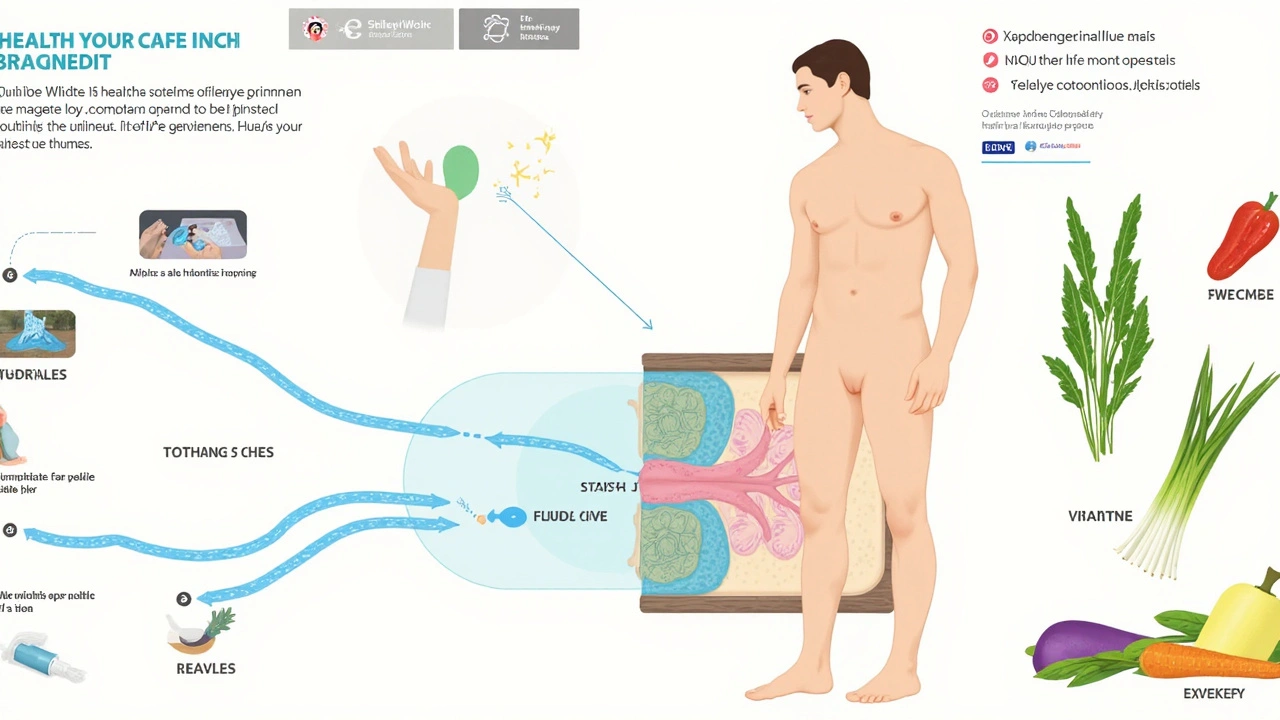
How It Works & Who Can Benefit
The lymphatic system is like your body’s unsung garbage collector. It gets rid of extra fluid, waste, and toxins through a network of tubes and nodes. But sometimes, things slow down—maybe after surgery, because of certain meds, or even just sitting too much. That’s where lymphatic drainage massage steps in. It uses light, rhythmic strokes or circular movements to nudge fluid out of areas where it builds up and push it back into the bloodstream, so your body can handle it naturally.
Most sessions focus on spots where fluid tends to pool, like legs, arms, or around the belly. It’s not about deep pressure. In fact, if it hurts, it’s probably being done wrong. Gentle and steady wins the race here. Therapists follow a set sequence, usually starting near the collarbone and moving outward. That’s because the main lymph drainage spots, or "nodes," are up by your shoulders and neck.
- It’s clinically proven to reduce swelling (called lymphedema), especially after cancer treatments like mastectomy.
- A lot of folks use it to fight puffiness after surgery or injury.
- Some people swear by it to help with sinus congestion, migraines, or just to feel less puffy after a salty meal.
Who’s a good fit? You might benefit if you:
- Have swelling in your legs, arms, or face
- Spend hours sitting or standing on the job
- Recovering from surgery (especially cosmetic work)
- Deal with chronic sinus stuffiness
- Notice you hold onto water before or during your period
Here’s a quick look at research-supported uses for lymphatic massage and who can benefit the most:
| Condition | Benefit | Best Candidates |
|---|---|---|
| Lymphedema | Reduces arm/leg swelling by 30-50% with regular sessions | Post-cancer treatment, post-surgery |
| Cosmetic surgery recovery | Speeds up healing and reduces swelling | After liposuction, tummy tucks |
| Sedentary lifestyle | Reduces minor swelling, helps with that heavy feeling | Desk workers, frequent travelers |
| Sinus issues | Relieves congestion, pressure in the head and face | Allergy sufferers, cold or sinus infection recovery |
Not everybody should jump in. If you have heart or kidney problems, or any kind of active infection, make sure to check with your doctor first. Otherwise, for most healthy folks, it’s a gentle, low-risk way to help your body with its behind-the-scenes clean-up work.
Types of Techniques & Where to Try
If you’ve never had a lymphatic drainage massage before, it helps to know there are different ways to do it. Some are designed for the clinic, and others you can try at home. Here’s what you’ll see most often:
- Manual Lymphatic Drainage (MLD): This is the classic technique. A certified therapist uses light, rhythmic strokes to move fluid toward your lymph nodes. MLD isn’t painful—in fact, it’s crazy gentle, almost like someone petting a cat. It’s especially popular for folks recovering from surgery, people with swelling from lymphedema, or anyone looking to boost fluid movement after a long flight or big meal.
- Self-Massage: You can do basic moves on yourself, like gentle brushing or pumping motions toward your collarbone (this is a main drainage area). For arms or legs, you always want to start close to the core and move out to the sides, then back in. It’s easy to add to a bedtime routine and can help with puffy ankles or a stuffed-up face.
- Vacuum & Machine-Assisted Techniques: Some clinics use gadgets that provide a steady, pulsing pressure to boost lymph movement. These machines, like pneumatic compression boots or rollers, are often used by athletes or after certain surgeries for faster results.
- Dry Brushing: This is everywhere on TikTok and Instagram. You use a soft brush on dry skin, sweeping in long motions toward your heart. While not as targeted as professional work, people say it helps with morning swelling and gives their skin a wake-up call.
Wondering where to try out these techniques? Here’s the lay of the land:
- Spas & Wellness Clinics: Lots of places advertise *lymphatic drainage massage* as a specialty. Some go old-school manual, others have the techy gadgets, and some mix both. Always ask if the therapist is certified in MLD, especially if you have health issues.
- Physical Therapy & Rehab Centers: If you’re dealing with post-surgery swelling or have a chronic condition, you might get referred to these centers. They know their stuff and can tailor a plan to your needs.
- Home: Self-massage and dry brushing need no fancy setup—just a little know-how and maybe a soft brush (easy to find at drugstores). Watching a quick tutorial online can give you the confidence to give it a shot. Just listen to your body and avoid broken skin.
Here's a quick glance at how these techniques compare in terms of where you’ll find them and who usually goes for them:
| Technique | Where You Can Get It | Who It’s For |
|---|---|---|
| Manual Lymphatic Drainage | Spas, Clinics, Physical Therapists | Anyone needing professional help, recovery, chronic swelling |
| Self-Massage | Home | DIY fans, mild puffiness, regular upkeep |
| Machine-Assisted | Wellness Clinics, Some Spas | Athletes, post-op recovery, tech lovers |
| Dry Brushing | Home | Anyone curious, beauty routine buffs |
If you’re just starting, go slow and pay attention to how you feel after. And if you’re not sure which method to try, talk to an expert or start with a spa that specializes in lymphatic care. Sometimes that first gentle session is all it takes to get hooked!
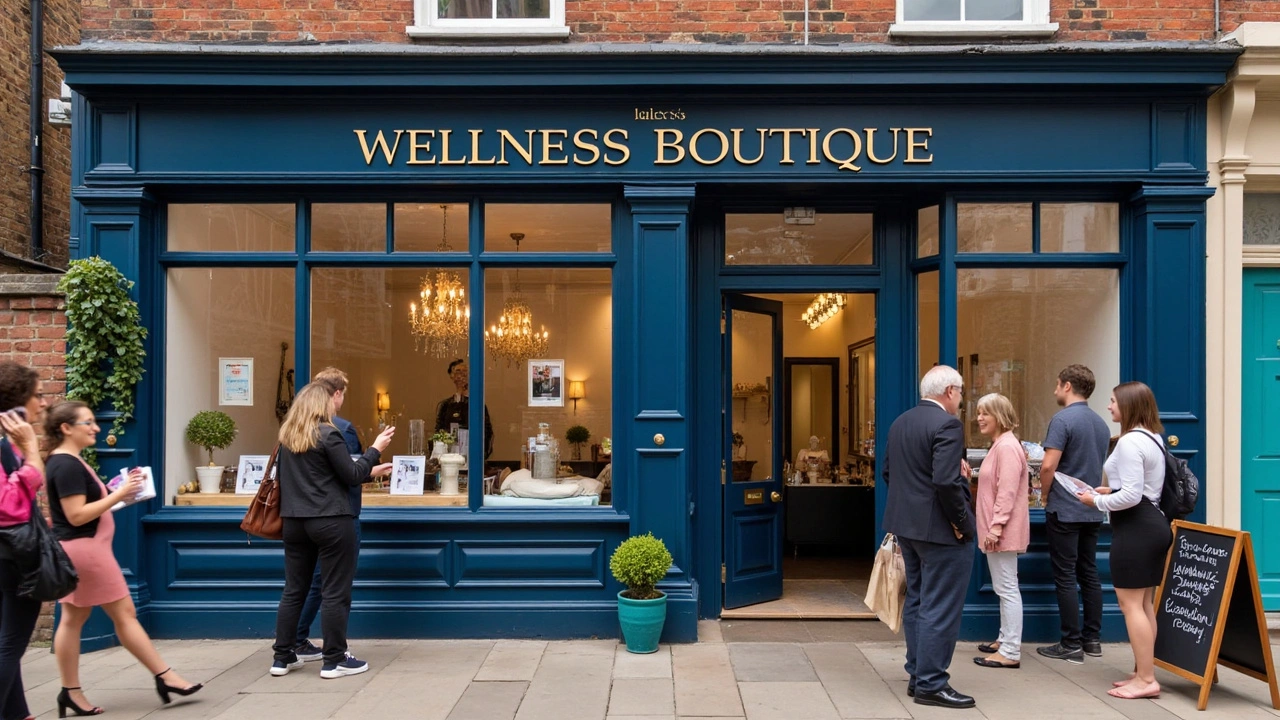
Tips for Safe and Effective Sessions
If you're brand new to lymphatic drainage massage, you don't want to just wing it. While this style is gentle, it still matters how and when you do it. Let’s dig into what makes for a safe, effective session whether you’re going DIY or hiring a pro.
First up, go easy. This isn’t like kneading out a muscle cramp, so don’t press too hard. Light pumping strokes, in the direction of lymph flow (usually toward your heart), is the sweet spot. According to the Cleveland Clinic, “Applying too much pressure can actually shut down lymphatic flow.”
“Lymphatic drainage massage is about the skin moving, not the muscles. If you feel pain, you're pushing too hard.” – Dr. Nancy Carteron, rheumatologist and lymphatic expert
Here’s how you set yourself up for success every time:
- Stay hydrated: Drink a glass of water before and after your session. This helps move waste out of your system faster.
- Start with clean skin: No lotions or oils until after, as they can make it hard to get the right grip.
- Target trouble zones: Focus on areas that swell, like ankles, behind the knees, neck, or underarms.
- Don’t rush: Give each move 3-5 slow, gentle strokes instead of lots of quick ones.
- Skip if you’re sick: If you’ve got an infection, fever, or serious heart/kidney issues, this isn’t the right time. Talk to your doctor first.
- Don’t use if you’re pregnant without checking: Always clear it with your OB or midwife.
Wondering how your session might line up with common questions or myths? Here’s a little breakdown of safety tips and real world facts:
| Tip | Why It Matters | Known Facts/Stats |
|---|---|---|
| Light touch only | Prevents lymph flow shut-down | Too much pressure can collapse lymph vessels (Cleveland Clinic) |
| Hydrate before/after | Boosts toxin clearance | Up to 60% of post-massage dehydration comes from loss of fluid in lymph movement (ISL Conference, 2022) |
| Avoid if sick/infected | Can worsen illness | CDC recommends against massage during infection or fever |
| Ask if pregnant | Needs provider approval | Most massage therapists require doctor’s note in pregnancy |
Lastly, listen to your body. If anything hurts or you feel worse afterward, back off and ask a professional for advice. If you want more direction, a certified lymphatic massage therapist can walk you through safe steps and spot any issues. Search for one certified by the Lymphology Association of North America (LANA) to make sure you’re in good hands.
